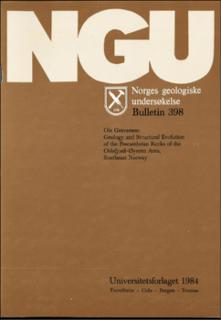| dc.description.abstract | The area (1200 km\u00B2) described covers the northern part of a major thrust segment in the eastern subprovince of the Sveonorwegian orogenic belt along the southwestern margin of the Baltic Shield. The oldest rock unit is a supracrustal gneiss, which was later intruded by biotite gneiss (oldest), augen gneiss, a metatonalite\/granite complex, and granitic orthogneiss (youngest). Four fold episodes, F0-F3, of regional importance have been distinguished. In the earliest regional fold structure (f0) the biotite gneiss occurs as a large recumbent fold nappe enveloped by supracrustal gneiss, which forms a distinctive unit parallel to the biotite gneiss. F1 folds generally have subhorizontal NNE-SSW fold axes and are overturned to the east; the deformation is accompanied by medium- to high-grade amphibolite facies metamorphism and widespread anatexis. F2 folds are superimposed on the F1 folds nearly at right angles. The F2 fold axes plunge at about 30\u00B0 to the NW, and the E-W trending axial planes are inclined to the south. Medium-grade amphibolite facies metamorphism with renewed anatexis accompanied F2. During F3 the western part of the area acted as a rigid block, while to the east, earlier structures were reorientered by the F3 folds. The F3 folds trend NNW-SSE with steep axial planes and rather shallow NNW-plunging fold axes. The deformation took place under medium- to low-grade amphibolite facies conditions, while retrogressive conditions in the greenschist-amphibolite transition occurred during the waning stages of this episode (F3'). Granitic orthogneiss was intruded at around 1320 Ma between F2 and F3 episodes, and the metatonalite\/granite complex intruded shortly before F2 (metamorphism) at around (?) 1500 Ma. These results indicate that only the youngest deformation (f3) took place in the Sveconorwegian orogeny. The major tectono-metamorphic evolution took place | |

